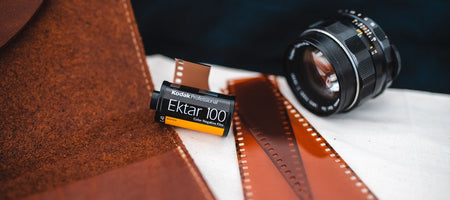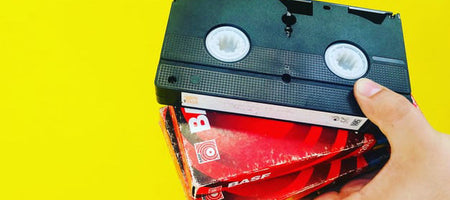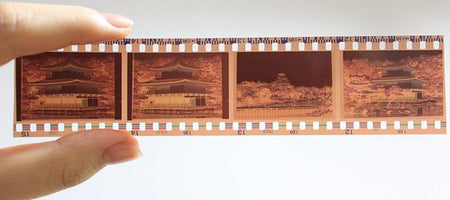We grew up taking pictures on film. Shooting home videos on film. Watching movies in theaters on film.
Basically, for kids born before the millennium, film is ingrained in our history as much as the memories they carry.
In fact, you probably have a collection of old negative rolls, video tapes – and if you’re lucky enough – reels of film. But have you ever stopped to think about how a reel of film actually works? After all, the format has been around for more than 125 years but its invention remains remarkable even now.
What is film & how is it made?
To understand how film reels work, we’ve got to know what film is first. Essentially, a series of actions (aka a motion picture) is recorded onto strips of plastic film base (actual glass back in its heyday) where one side is coated in gelatin emulsion containing micro silver halide crystals. When light is exposed to these crystals through the camera lens, the gelatin emulsion on the plastic film darkens, capturing the pattern of whatever image the camera shot. The result is an invisible image on the film. When the film is developed with a certain mixture of chemicals, the invisible image becomes visible producing what we all know as a photograph.
Motion pictures are just strips of photographs recorded through individual frames that when played at a certain speed (on a reel) produce moving images. Put the film in front of a projector to project the images on a big screen and you’ve got yourself a cinema experience. Just add an audience and popcorn.
Do you hear that?
Okay, so now you know what film reels are made of and how they visually work, but what about audio? How is sound captured on film?
The simple answer is that audio is recorded onto film by the variable-area soundtrack process (or SVA). Okay … what’s that mean? Well, the more detailed answer lies in how the SVA process works, so buckle up because it’s a bit of a technical ride.
During SVA, sound is recorded in a transparent line (which varies in width according to the frequency) along the length of the motion picture film. As the film passes this transparent line, an exciter lamp shines bright light along the line, passing through the film onto a photodetector. From here, the photodetector changes the light to an electrical current, sending it to a pre-amplifier to boost the signal of the current before passing it along to an amplifier, and finally to a speaker which actually produces the sound for people to hear. Whew. If that isn’t teamwork, then what is?
The importance of digitizing your film
And to think, all of this specific technology was thought up by brilliant minds more than a century ago. Just think how different our lives would be without the invention of film and film reels. We’d have no movie theaters to entertain, no summer blockbusters, and more importantly, no way to capture those memorable moments we all love to look back on. And speaking of memorable moments, if you have a box of old videotapes, camera film or film reels laying around, consider digitizing them today. That way your trip down memory lane can extend beyond the physical realm to the digital world – share, post, love … treasure. Because that’s exactly what film is – a treasure. And know you know why.













